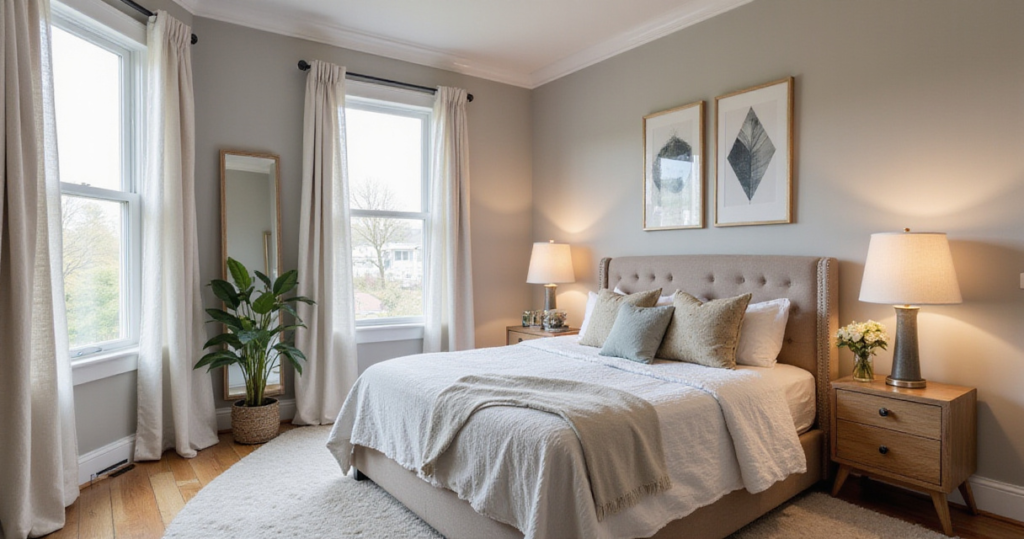Is your bedroom feeling more like a storage unit than a sanctuary? You’re definitely not alone. When square footage is at a premium, every design choice becomes crucial. The good news? Small bedroom decor isn’t about limitation—it’s about liberation through smart design. By blending Asian principles of intentional living with European efficiency, you can create a space that breathes despite its compact footprint.
The secret lies in understanding that small bedroom decor success comes from making deliberate choices rather than simply cramming everything in. Whether you’re working with a studio apartment or a cozy guest room, these 20 strategies will help you craft a bedroom that feels surprisingly spacious, deeply functional, and authentically yours.
1. Ruthlessly Declutter Your Space for Instant Openness
We’ve been working behind the scenes on something special—the art of intentional reduction. Before adding a single decorative element, you need to strip away everything that doesn’t serve your daily life. This isn’t Marie Kondo territory; this is about creating breathing room in your small bedroom decor by removing the visual noise that makes spaces feel cramped.
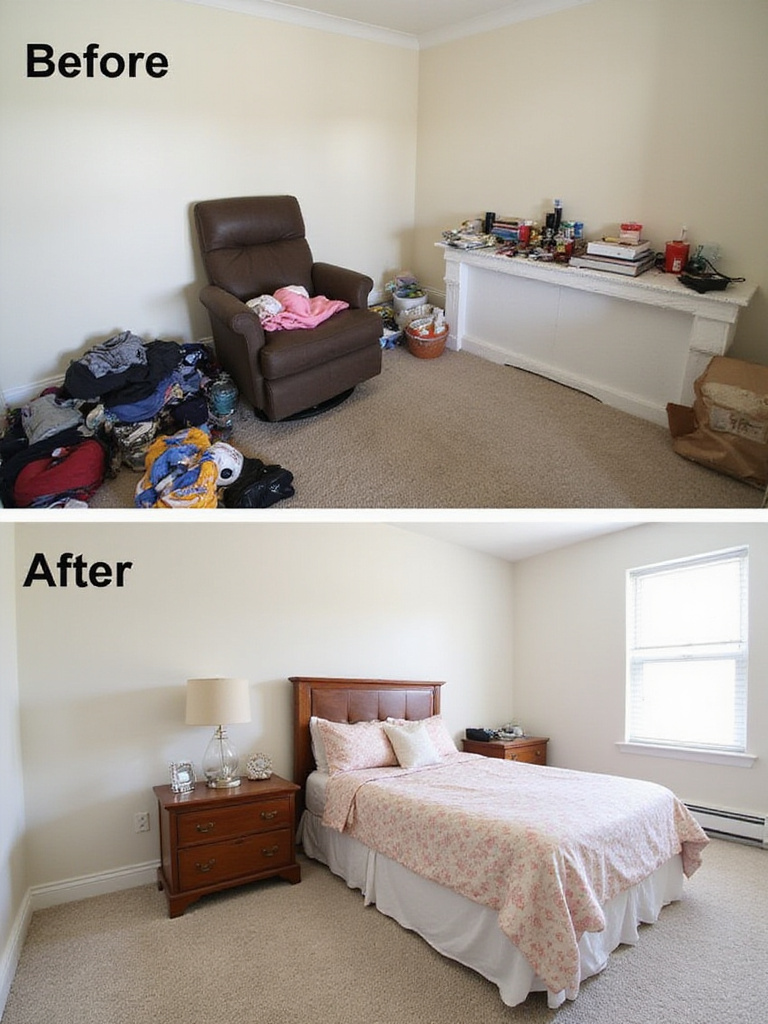
Start with categories rather than random items. Empty your nightstand completely, then return only what you use weekly. Do the same with surfaces, drawers, and that chair that’s become a clothing repository. The goal isn’t minimalism for its own sake—it’s creating space for what matters. When clients ask us about balancing style with comfort, we always start here: you can’t style what you can’t see.
The transformation happens immediately. With excess removed, you’ll notice how much larger your room actually feels—and how much easier it becomes to implement the remaining strategies.
2. Optimize Furniture Layout for Clear Walkways
The magic of this piece lies in its placement rather than its beauty. Your bed might be gorgeous, but if it blocks natural pathways, it’s working against your small bedroom decor goals. Think of your room as having invisible rivers of movement—from door to window, bed to closet, nightstand to dresser. These pathways need to flow unobstructed.
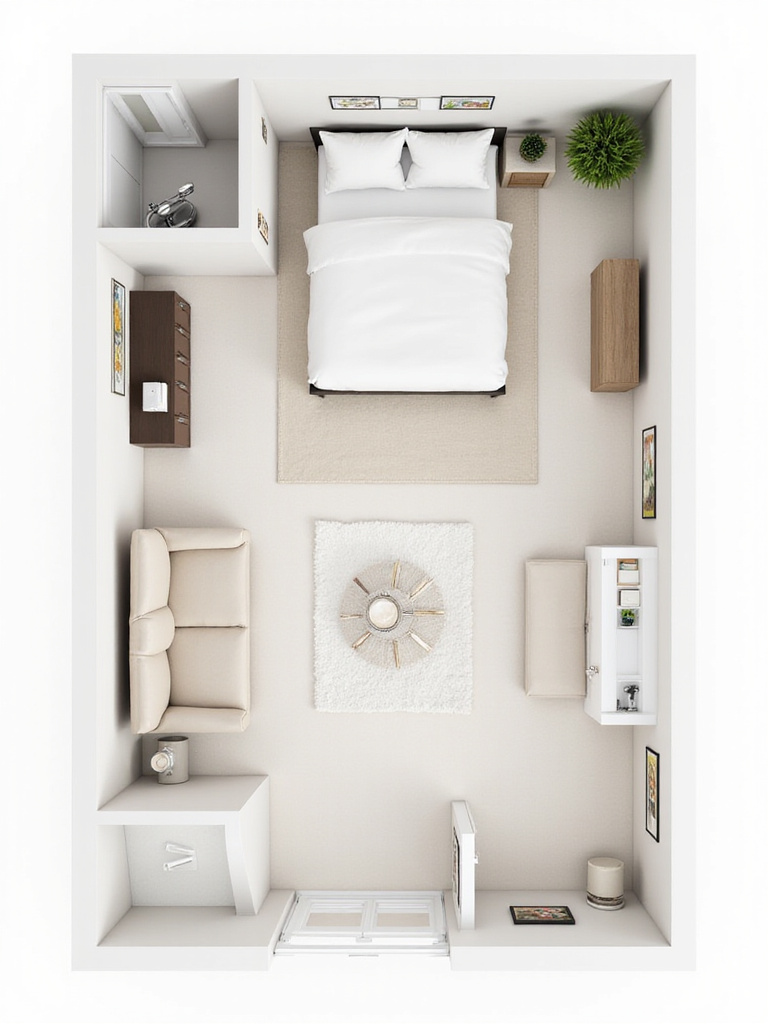
Measure everything before moving anything. Your main walkway needs at least 30 inches of clearance—more if possible. Position your bed first, then arrange other pieces to support rather than compete with this focal point. Sometimes the unconventional placement works best: floating your bed in the center of the room can actually create more usable space around the perimeter.
With your furniture creating harmony rather than obstacles, you can now focus on the hidden storage opportunities right beneath your feet.
3. Unlock Valuable Storage Space Under Your Bed
Look closely and you’ll notice the subtle opportunity hiding beneath your mattress. This overlooked real estate might be the most valuable square footage in your entire room. Unlike visible storage that can make small bedroom decor feel cluttered, under-bed storage works invisibly, keeping seasonal items and rarely-used belongings accessible but out of sight.
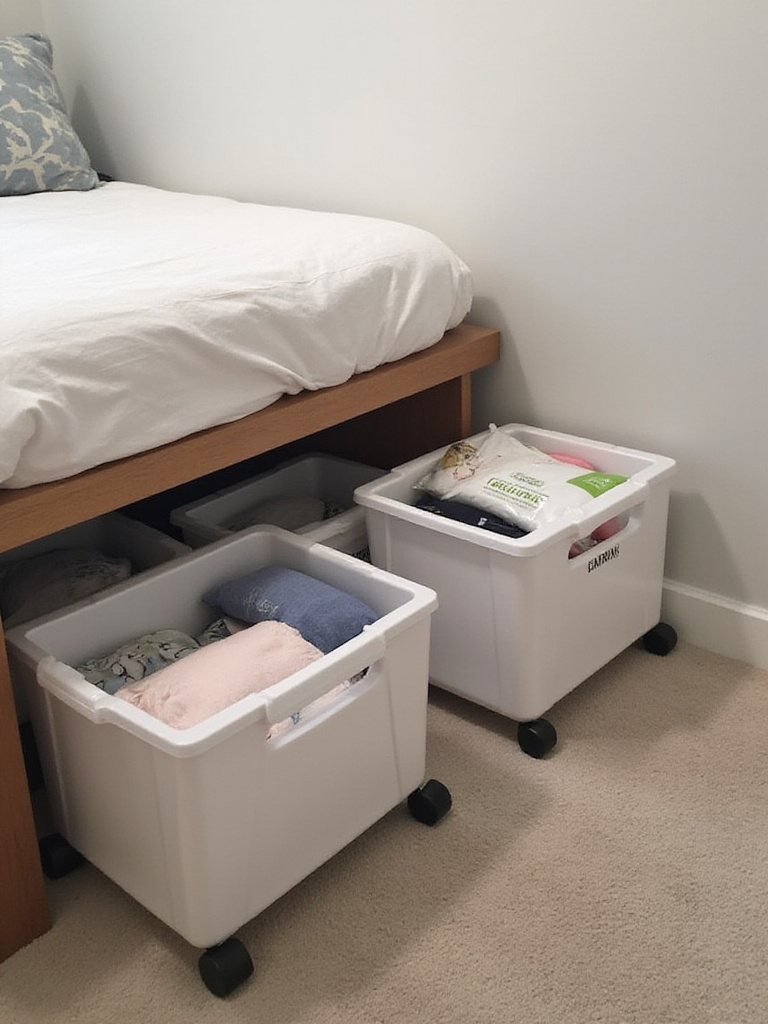
Invest in proper containers—not cardboard boxes that collapse or plastic bags that tear. Rolling bins with wheels make accessing items effortless, while vacuum-sealed bags maximize capacity for linens and off-season clothing. The key is labeling everything clearly and keeping frequently accessed items toward the foot of the bed where they’re easier to reach.
This hidden storage foundation frees up your visible space for the things you actually use daily. Now let’s look up and see how your walls can work harder.
4. Maximize Vertical Wall Space with Floating Shelves
The unexpected pairing that always works is combining storage with style through strategic vertical placement. Floating shelves eliminate the visual weight of traditional furniture legs while providing essential storage. In small bedroom decor, every surface needs to multitask, and walls offer prime real estate that often goes completely unused.
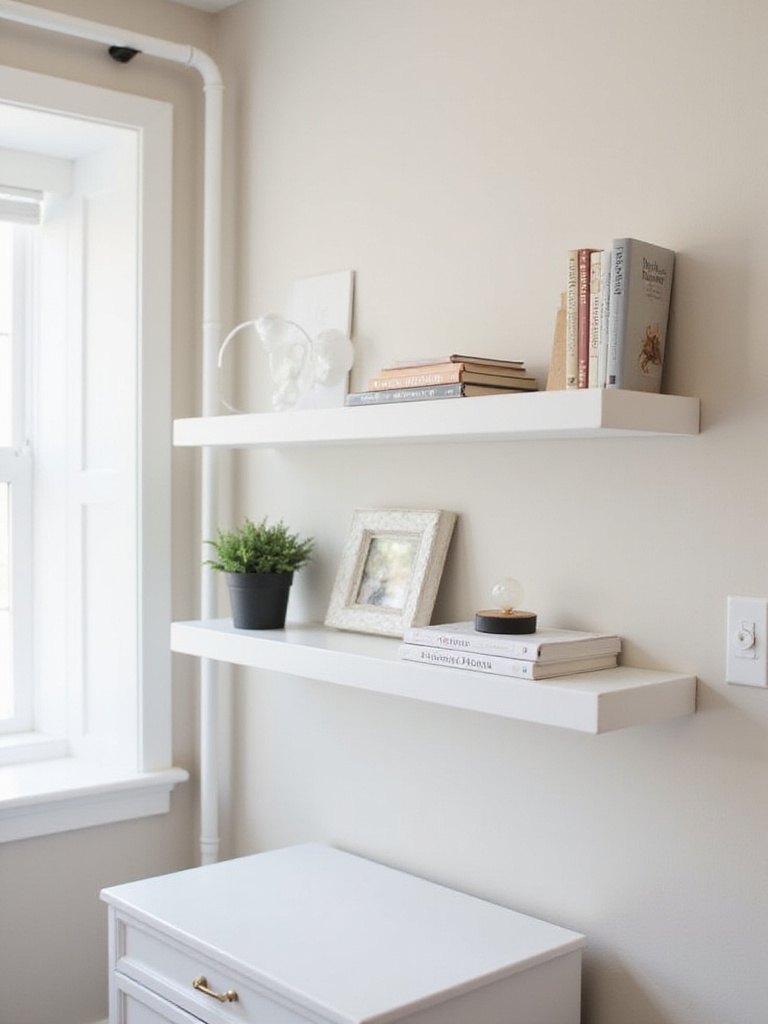
Install shelves at varying heights to create visual interest while serving different functions. Higher shelves hold decorative items and books you don’t access daily, while lower ones keep essentials within reach. The key is choosing depths that accommodate your items without protruding too far into the room—6 to 8 inches works for most bedrooms.
Floating shelves are just the beginning of getting furniture off your floor. Let’s explore how your nightstand can literally rise to the occasion.
5. Install Wall-Mounted Nightstands to Free Up Floor
Professional stylists approach this by first questioning every piece of floor-standing furniture. Traditional nightstands, while functional, consume precious real estate right where you need to move freely. Wall-mounted alternatives provide the same surface area and storage while creating that crucial sense of openness that makes small bedroom decor feel less cramped.
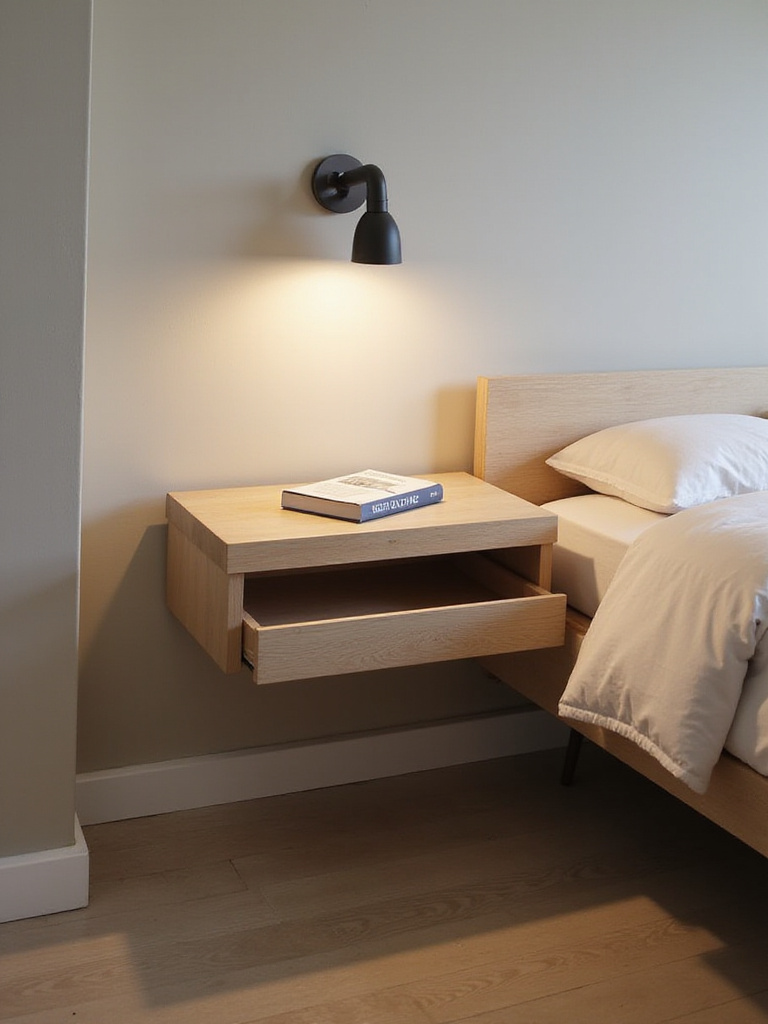
Choose units with integrated drawers or hidden compartments to maintain clean lines. Mount them at the exact height of your mattress top for optimal functionality—this usually means measuring from the floor to your bedding surface, not just the mattress. The visual impact is immediate: suddenly your floor extends unbroken beneath the bed area.
Creating this sense of flow around your bed makes the entire room feel less congested. Speaking of hidden opportunities, let’s examine a vertical surface that’s probably completely wasted right now.
6. Utilize the Back of Your Door for Hidden Storage
Beyond aesthetics, the ecological impact matters because every inch of unused space represents a missed opportunity in small bedroom decor. Your door’s back panel offers 12-15 square feet of potential storage that remains completely invisible when the door is open. This space works perfectly for items you need regularly but don’t want cluttering your visual field.
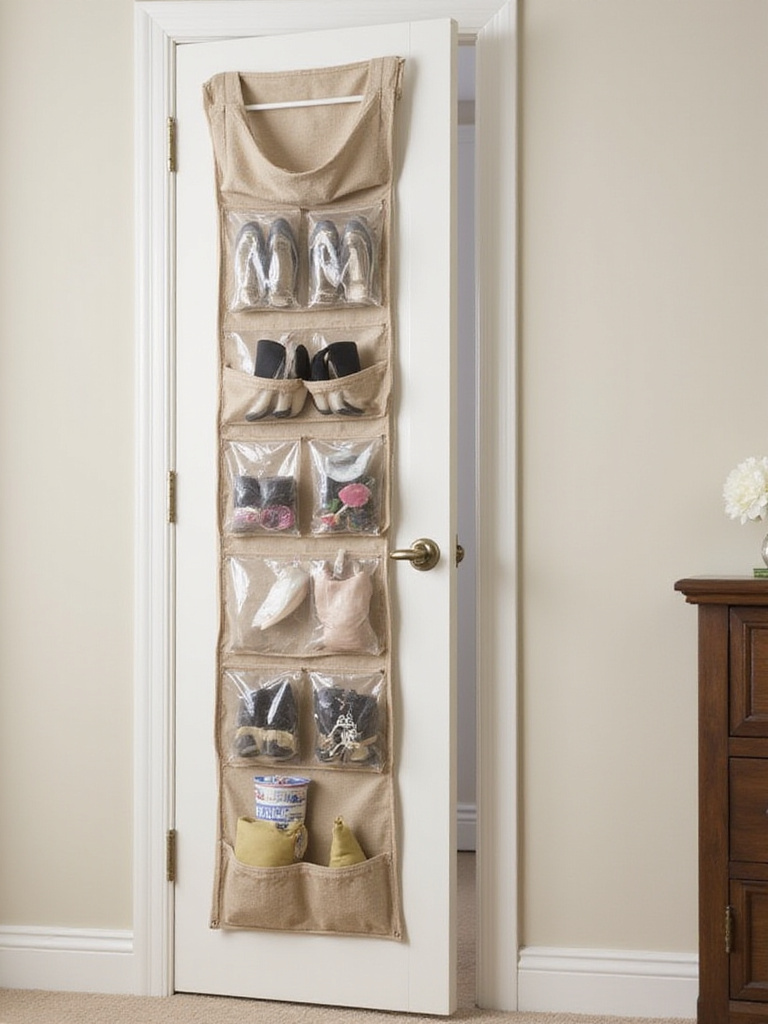
Over-the-door organizers handle everything from shoes to accessories, while mounted hooks accommodate bags, scarves, or tomorrow’s outfit. The key is choosing organizers that don’t exceed your door’s clearance—measure the gap between your door and frame when closed. Add felt pads to prevent scratching and reduce noise when the door moves.
Maximizing these invisible storage opportunities keeps your main room surfaces clear. Now let’s tackle the storage powerhouse that can make or break your small bedroom decor success.
7. Organize Your Closet for Maximum Capacity
The artisans’ commitment to environmental practices means treating your closet like the valuable resource it is. A disorganized closet doesn’t just hide your clothes—it spills chaos into your bedroom, making the entire space feel overwhelming. Strategic closet organization can increase your storage capacity by up to 40% while reducing the visual clutter that makes small bedroom decor feel chaotic.
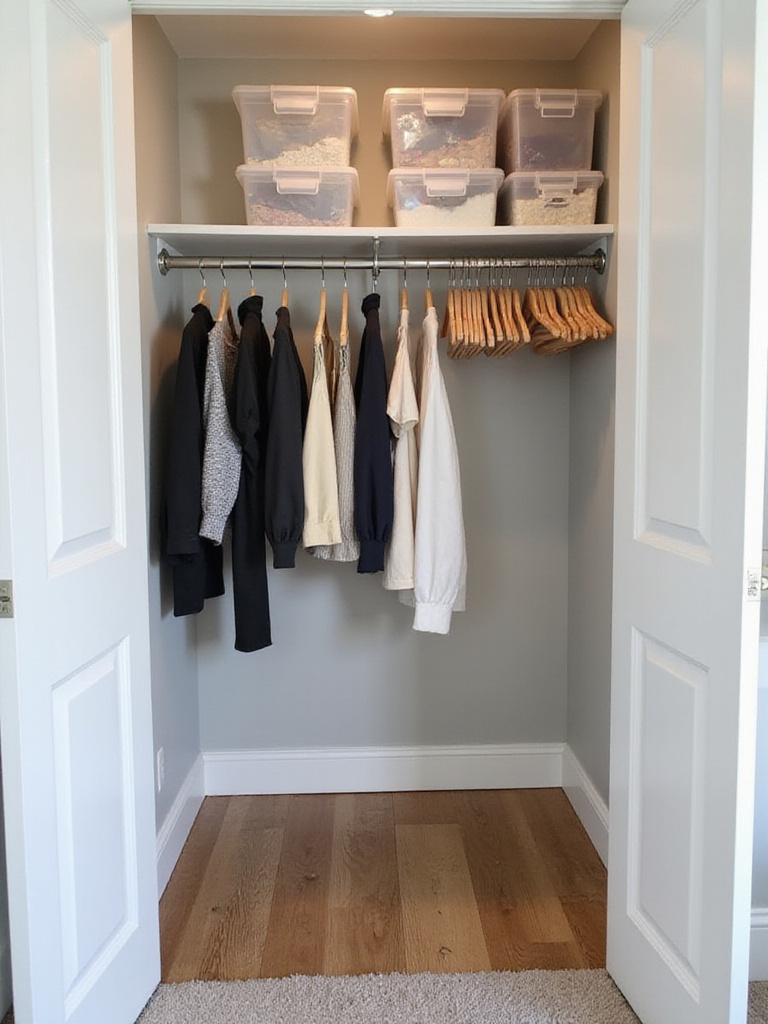
Start by removing everything and sorting ruthlessly. Most people wear 20% of their clothes 80% of the time, which means significant decluttering potential. Install double hanging rods for shorter items, add shelf dividers to prevent toppling, and use matching hangers to create visual calm. The back of your closet door becomes prime real estate for belts, ties, and accessories.
An organized closet functions like a well-designed storage room rather than a source of daily frustration. With storage optimized, let’s focus on choosing furniture that works smarter, not just harder.
8. Choose Multi-Functional Furniture Pieces Wisely
When clients ask us about balancing style with comfort in small spaces, we always emphasize furniture that serves multiple purposes. A storage ottoman provides seating, surface space, and hidden storage. A desk that folds against the wall disappears when not needed. These pieces don’t just save space—they eliminate the need for additional furniture entirely.
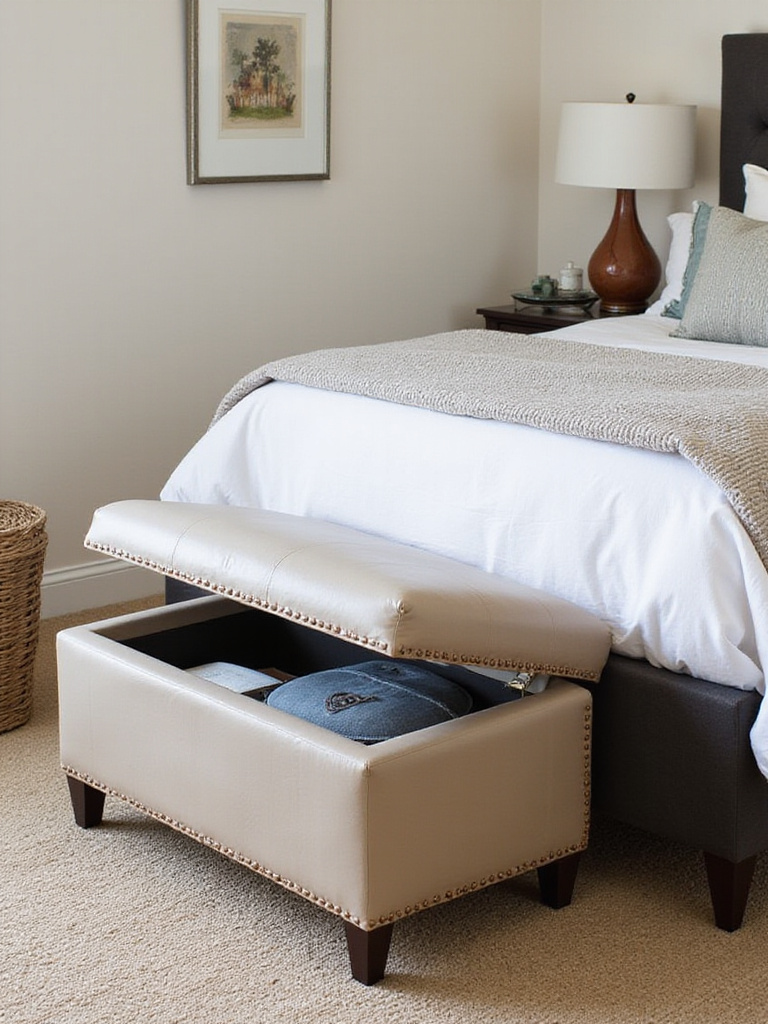
The key is avoiding gimmicky pieces that compromise on their primary function. A bed with built-in drawers should still be comfortable for sleeping. A storage bench should actually be pleasant to sit on. Quality multi-functional pieces cost more upfront but eliminate the need for multiple separate items, making them both economical and space-efficient.
Smart furniture choices create more room for movement and storage. But the visual impact of your furniture matters just as much as its function in successful small bedroom decor.
9. Select Slim-Profile Furniture to Reduce Visual Bulk
The silhouette draws inspiration from the principle that visual weight affects perceived space as much as actual dimensions. Chunky, solid furniture pieces create visual barriers that make rooms feel smaller, while slim-profile pieces allow light and sightlines to flow freely. This creates the illusion of more space even when the actual footprint remains similar.
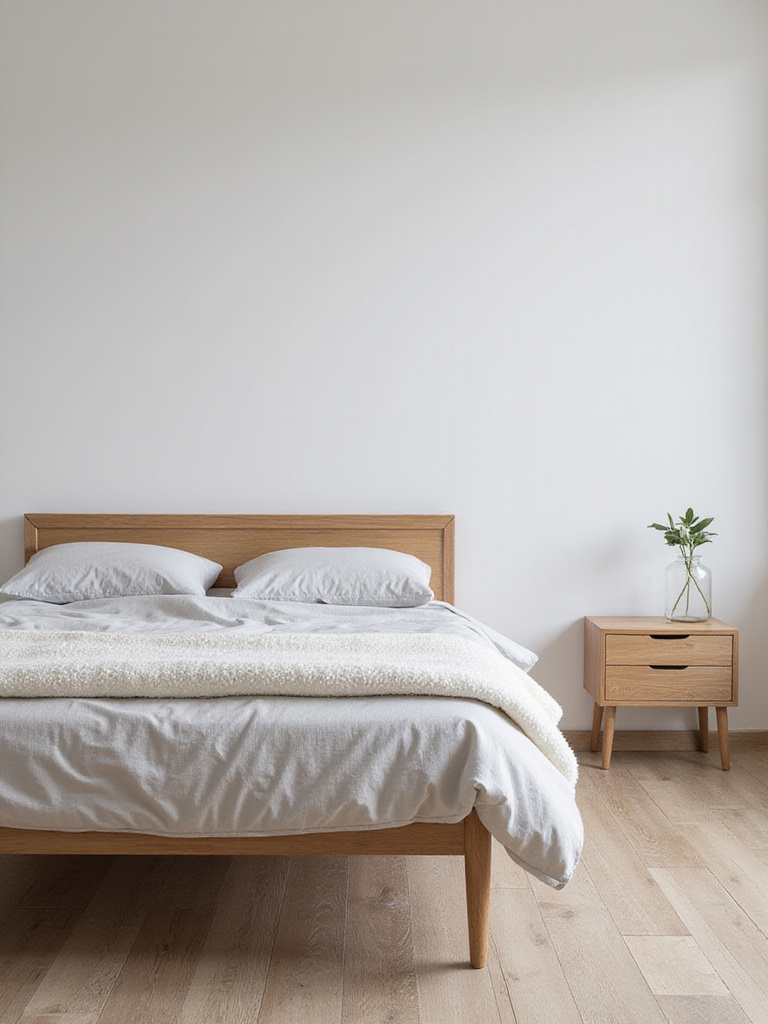
Look for furniture with legs rather than solid bases, narrow rather than deep proportions, and clean lines rather than ornate details. A dresser that’s 16 inches deep instead of 20 inches might not seem significant, but those 4 inches matter when you’re navigating around it daily. Glass or acrylic elements add function without visual weight.
Choosing furniture that feels light and airy contributes to an overall sense of spaciousness. Let’s explore how the area behind your bed can become a storage powerhouse.
10. Build or Buy a Headboard with Integrated Storage
The composition comes together when you realize your headboard wall offers vertical storage potential that doesn’t compete with floor space. Instead of a simple decorative panel, a storage headboard provides shelving, drawers, or cubbies exactly where you need them most—within arm’s reach of your bed. This eliminates the need for bulky nightstands while keeping essentials accessible.
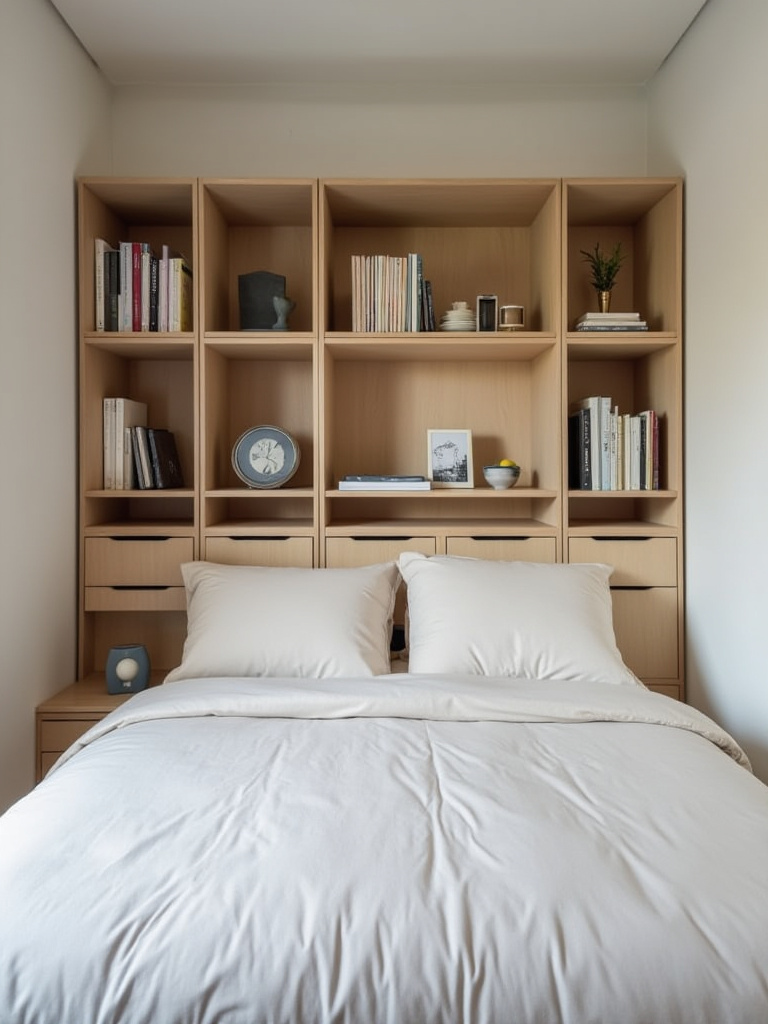
Built-in lighting transforms these headboards from simple storage into sophisticated design elements. LED strips under shelves provide reading light without table lamps, while hidden compartments keep charging cables organized. The key is ensuring adequate depth for books and devices without making the headboard protrude uncomfortably into the room.
This strategic storage solution keeps bedside essentials organized while maintaining clean floor lines. Now let’s address how color choices can fundamentally alter your room’s perceived size.
11. Brighten Walls with Light Paint Colors
As morning light filters through, the texture creates an entirely different spatial experience when walls reflect rather than absorb illumination. Light colors aren’t just trendy—they’re scientifically proven to make spaces feel larger by bouncing light around the room. In small bedroom decor, this reflection can add the equivalent of an extra window’s worth of brightness.
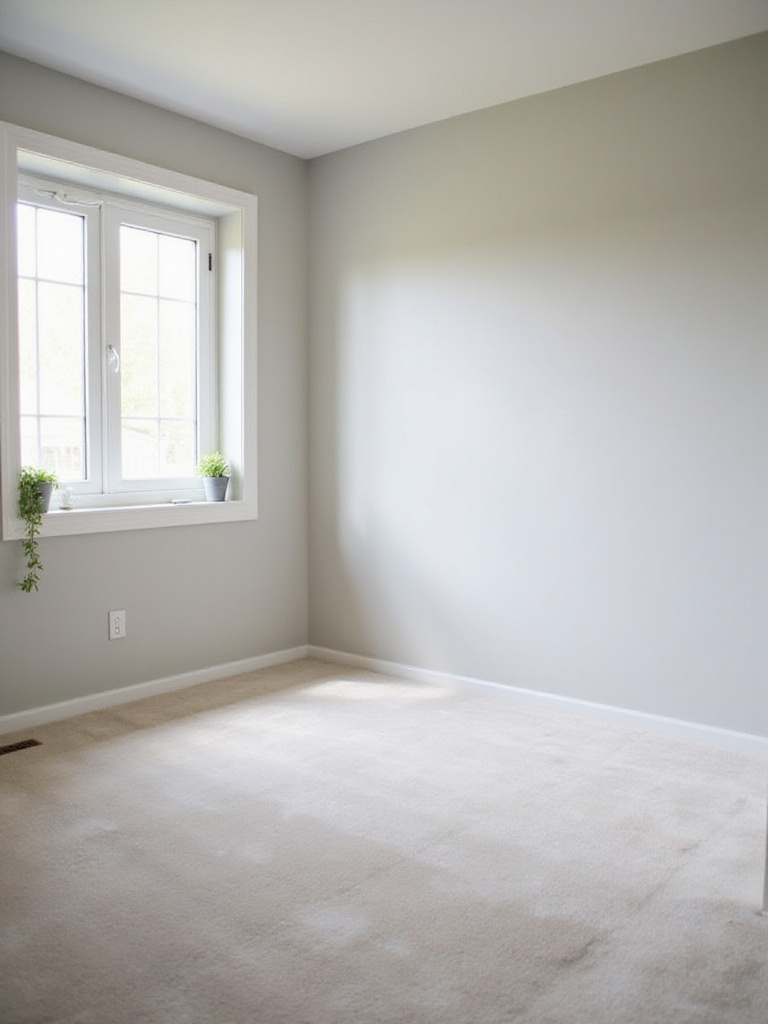
Choose colors with high Light Reflectance Values (LRV)—typically 70 or above. Pure white isn’t your only option; soft grays, warm creams, and pale blues all reflect light while adding subtle personality. Test samples on different walls to see how your room’s specific lighting affects each shade throughout the day.
Light walls create the perfect backdrop for the next space-expanding strategy: strategic reflection.
12. Strategically Place Mirrors to Visually Expand Room
The visual weight balances perfectly when mirrors reflect your room’s best features rather than random walls. A mirror placed opposite a window doubles your natural light while creating the illusion of additional square footage. But placement matters—mirrors should reflect something attractive, not clutter or awkward angles.
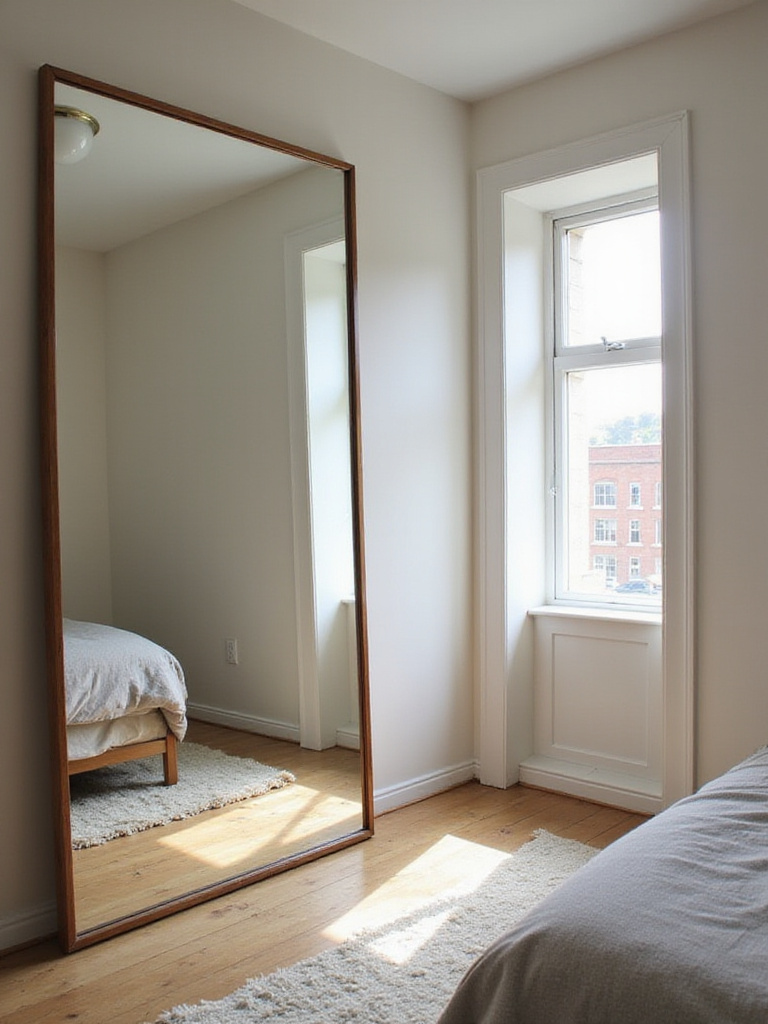
Consider size and proportion carefully. One large mirror often works better than several small ones in tiny spaces. Leaning a full-length mirror against the wall creates height and drama while remaining flexible for rearrangement. Mirrored closet doors serve double duty, providing function while making the room feel twice as wide.
Mirrors amplify both light and space perception. Let’s ensure your windows are working just as hard to brighten your small bedroom decor.
13. Use Sheer Curtains to Maximize Natural Light Flow
The mood shifts dramatically when you add natural light instead of blocking it. Heavy drapes might provide privacy, but they also create visual barriers that make small spaces feel smaller. Sheer curtains offer the perfect compromise—softening harsh light while maintaining the connection to the outdoors that makes any room feel more expansive.
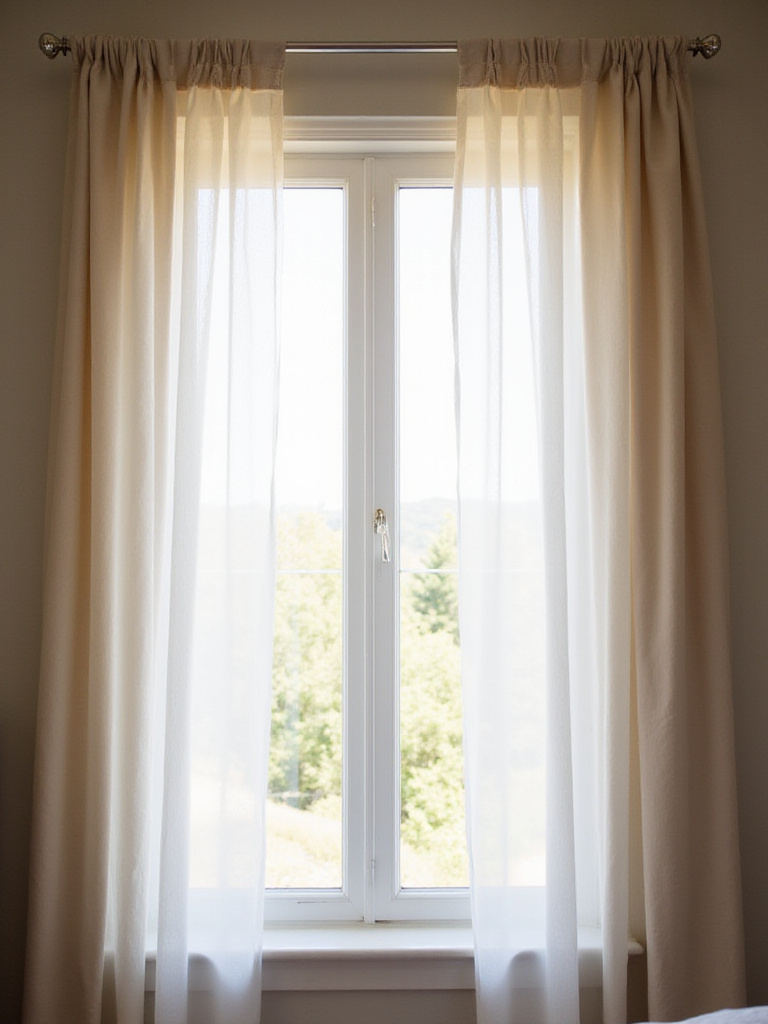
Hang curtains as close to the ceiling as possible and extend the rod beyond the window frame. This creates the illusion of larger windows while allowing maximum light penetration when curtains are open. Layer sheers with blackout panels on a double rod for privacy and light control when needed.
Natural light sets the foundation, but strategic artificial lighting adds depth and functionality to your small bedroom decor after dark.
14. Layer Lighting for Depth and Ambiance
Imagine coming home to the gentle glow of multiple light sources working together to create depth and warmth. Single overhead fixtures flatten spaces and create harsh shadows, while layered lighting adds dimension that makes rooms feel larger and more inviting. This approach transforms your small bedroom decor from functional to atmospheric.
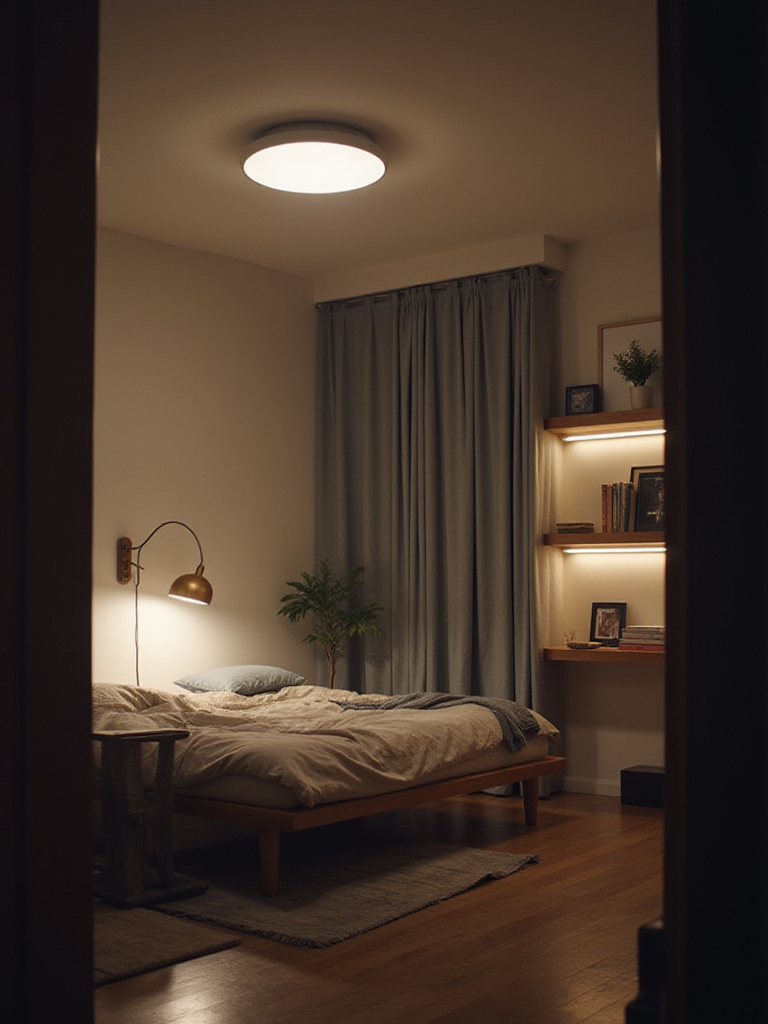
Combine ambient lighting (overhead or wall sconces), task lighting (reading lamps), and accent lighting (LED strips or picture lights). Dimmer switches allow you to adjust the mood from bright and energizing to soft and relaxing. The key is avoiding dark corners—even small accent lights in unused corners prevent the space from feeling closed-in.
Thoughtful lighting creates depth and interest. Let’s return to furniture choices and explore how legs can literally lift your small bedroom decor.
15. Opt for Furniture with Legs to Create Openness
Running your hand across this material reveals why elevated furniture feels so different from pieces that sit directly on the floor. When you can see underneath furniture, your eye reads the floor as continuous, making the room feel larger. This simple design choice can add the visual equivalent of several square feet to your small bedroom decor.
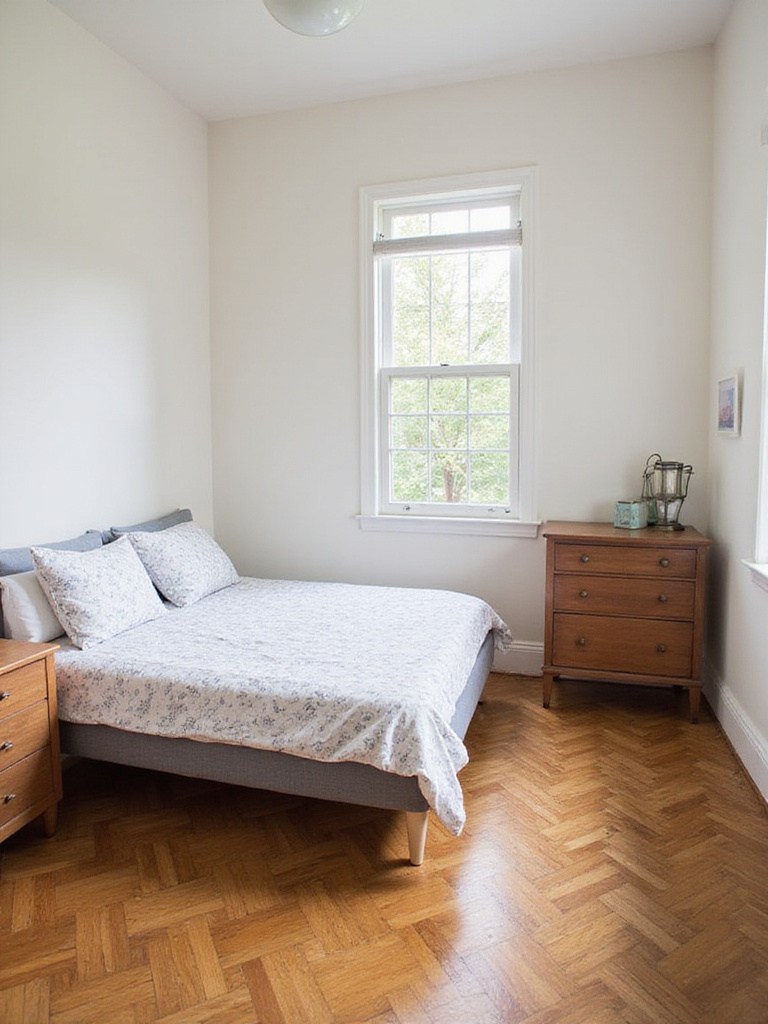
Choose pieces with legs at least 6 inches high for noticeable impact. Consistency matters—if your bed has legs, your dresser and nightstands should too. The style of legs affects the overall aesthetic: hairpin legs feel modern and minimal, while turned wood legs add traditional warmth.
Elevated furniture creates visual breathing room. Now let’s discuss how to decorate this enhanced space without overwhelming it.
16. Keep Decor Minimal and Curated, Not Cluttered
The styling mistake most people make is adding too many small decorative items that compete for attention rather than working together. In small bedroom decor, every decorative choice should be intentional. A few carefully selected pieces create more impact than numerous small items scattered throughout the space.
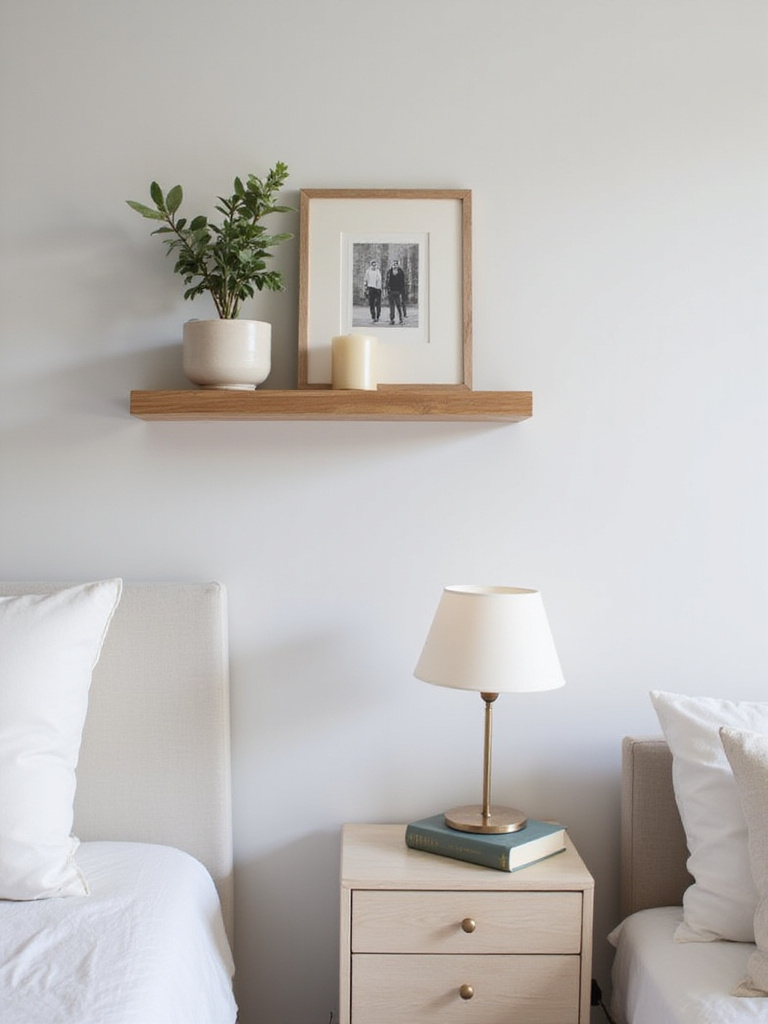
Follow the “rule of three” for groupings and maintain plenty of negative space on surfaces. One beautiful vase makes more impact than five small trinkets. Choose pieces that serve multiple purposes—a decorative bowl that holds jewelry, or books that add color while providing entertainment.
Curated decor creates calm rather than chaos. Let’s explore how strategic art placement can enhance your room’s vertical proportions.
17. Hang Artwork Strategically to Draw the Eye Up
The finishing touch that elevates the entire look involves directing attention upward rather than around the limited horizontal space. Hanging artwork higher than standard eye level draws focus to your room’s vertical dimensions, making ceilings feel taller and the overall space more expansive.
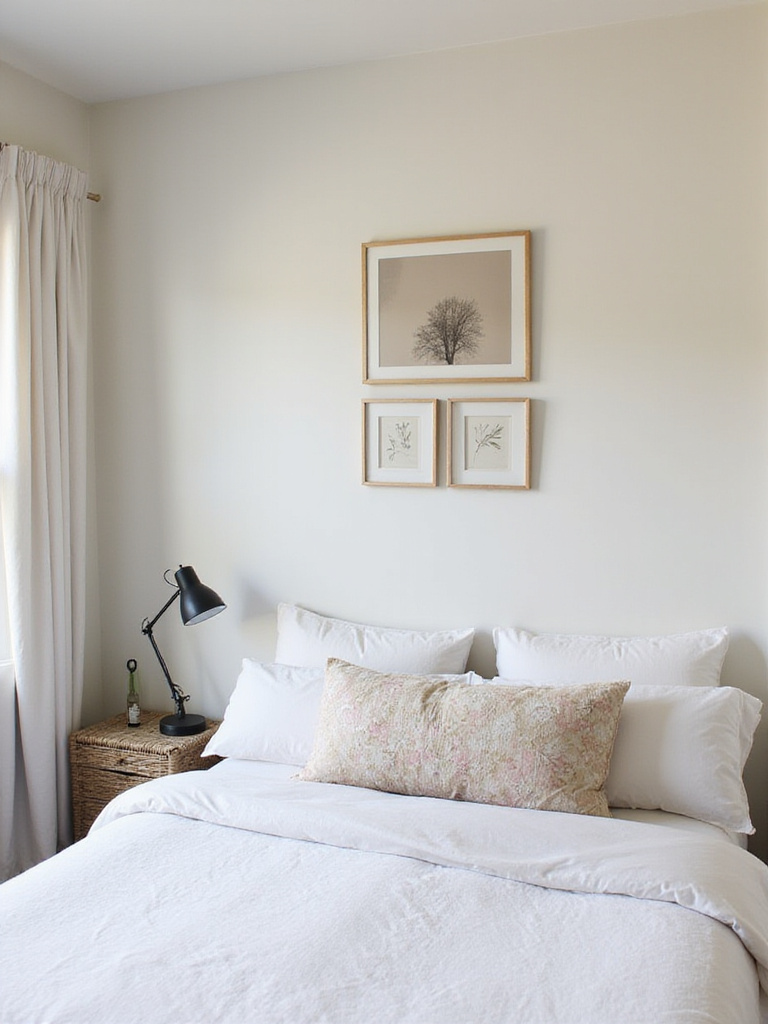
Create vertical arrangements rather than horizontal ones when possible. A series of three small pieces arranged vertically takes up less wall width while emphasizing height. Consider the wall behind your bed for a dramatic vertical statement that doesn’t compete with floor space.
Strategic art placement enhances vertical space perception. Let’s add life to your small bedroom decor without sacrificing precious surface area.
18. Incorporate Hanging or Small Potted Plants
Layer in dimension by simply adding living elements that don’t compete with your limited floor space. Hanging plants utilize vertical space while small potted varieties fit perfectly on narrow shelves or windowsills. Plants add life and color to small bedroom decor while improving air quality—a bonus in compact spaces.
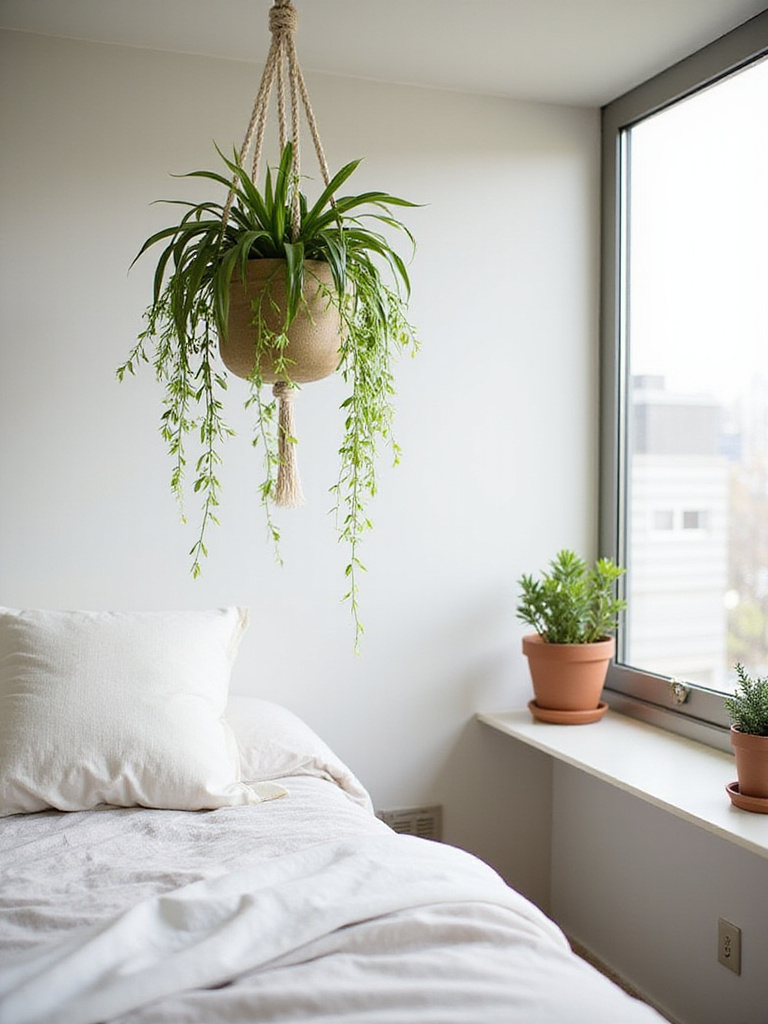
Choose low-maintenance varieties like pothos, snake plants, or ZZ plants that thrive in bedroom conditions. Hanging planters draw the eye upward, while small pots grouped on floating shelves create visual interest without clutter. Macrame hangers add texture while supporting the plants.
Living elements bring energy and freshness to your space. Let’s ground all these elevated elements with a foundation piece.
19. Define Your Space with a Well-Placed Area Rug
The unexpected environmental benefit comes from how a well-chosen rug can anchor your furniture arrangement while defining the sleeping area as distinct from the rest of the room. This is particularly important in studio apartments or rooms that serve multiple functions. The right rug creates boundaries without walls.
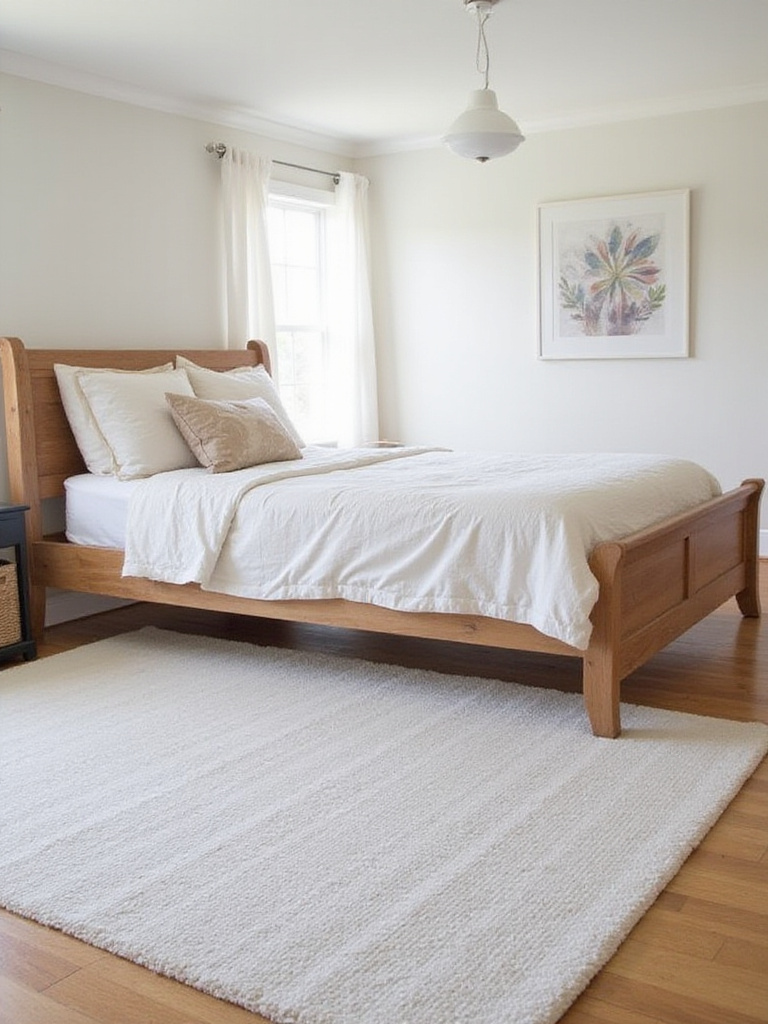
Size matters more than pattern in small spaces. Your rug should be large enough that at least the front legs of your bed rest on it, creating a cohesive furniture grouping. Too-small rugs make spaces feel choppy and disconnected. Stick to lighter colors and simpler patterns that won’t overwhelm your small bedroom decor.
A properly scaled rug provides foundation and definition. Finally, let’s ensure every accessory choice supports rather than detracts from your space-maximizing efforts.
20. Choose Accessories in the Right Scale
The emotional response this evokes begins with proportion—accessories that are too small get lost and create clutter, while oversized pieces can overwhelm a compact room. The goal is finding that sweet spot where each accessory feels intentional and appropriately scaled to both your room size and furniture proportions.
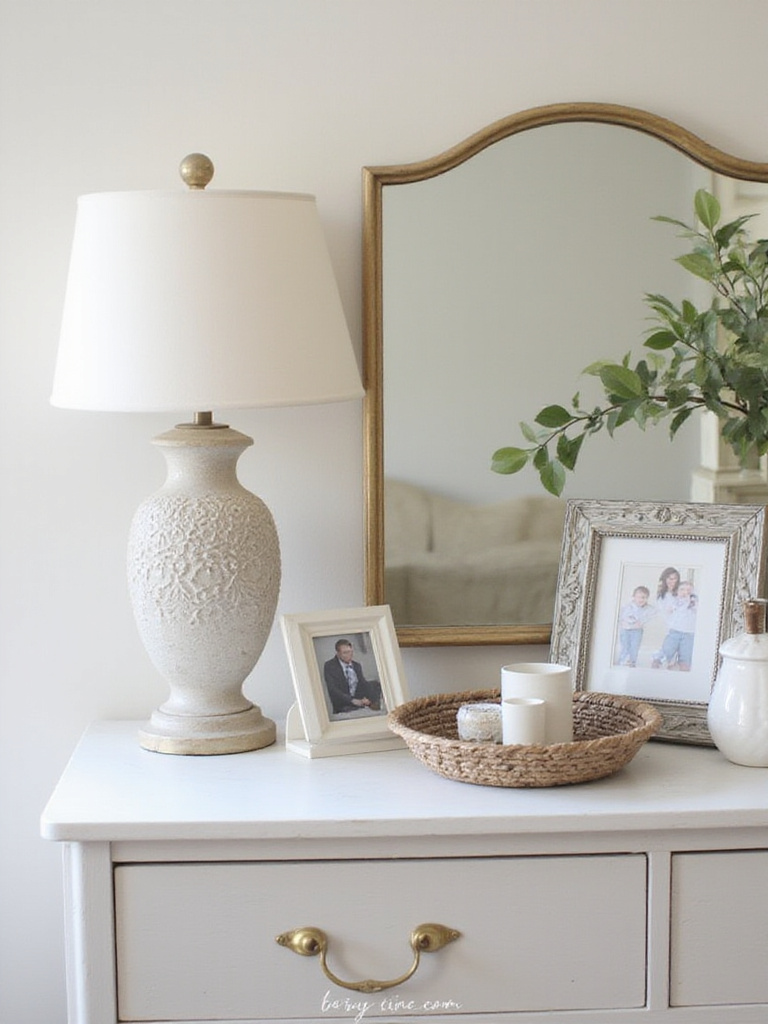
Group smaller accessories together on trays or within defined areas to give them more visual weight. One substantial table lamp works better than two tiny ones. Choose accessories that serve multiple purposes—a decorative mirror that also makes the room feel larger, or attractive storage boxes that hide clutter while adding style.
Conclusion
Creating a beautiful, functional small bedroom decor scheme isn’t about accepting limitations—it’s about embracing creative solutions. By starting with ruthless decluttering and strategic storage, you create the foundation for a room that breathes. Smart furniture choices, from wall-mounted nightstands to multi-functional pieces with legs, maximize both floor space and functionality.
The visual strategies—light paint colors, strategic mirrors, layered lighting, and carefully placed artwork—work together to create the illusion of expanded space. Meanwhile, thoughtful details like sheer curtains, curated decor, and appropriately scaled accessories ensure your room feels intentional rather than cramped.
Your small bedroom has the potential to become your favorite room in the house. By implementing these strategies thoughtfully and consistently, you’ll create a space that feels surprisingly spacious, deeply restful, and uniquely yours. The key is making every choice count—because in small bedroom decor, there’s no room for anything that doesn’t serve both function and beauty.
